
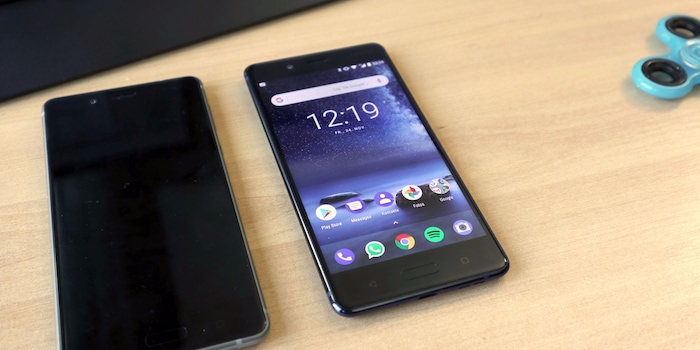
Pimp my Phone, Part 2: What can the Nokia 8 with 6 GB RAM do?
We christened it the Diesel version, the new Nokia 8 with lots of RAM and even more memory. A loving tribute to the actor, who is almost as fast and furious as the mobile. But how much power is really under the bonnet?
Rump! The new Nokia 8 has hit me like a bomb. "You sentimental nostalgic you", I scolded myself. In fact, I gave the mobile good marks in my test. Not because it reinvented the smartphone wheel. But it does everything it does well and reliably, without annoying crashes or bugs. And at a reasonable price.
Now I have a new Nokia on my desk. Okay, it looks exactly like the Nokia 8, and apart from a few minor details, it's exactly the same. The significant differences to its little brother are the RAM and storage space. But what does the extra power do in everyday life?
Fast and Furious: New model - original parts
With the new Power model, Nokia is taking another step towards the high-end. As soon as the product management team presents me with the smartphone, Senior Editor Dominik Bärlocher and I start working on a sonorous name that does justice to the sheer power of 6 GB of RAM and a Qualcomm Snapdragon 835 processor. Dominik and I quickly agreed. In affectionate reference to the bald actor who can drive very fast, we call it the "diesel model" from now on. After all, it's also very fast and very furious. New model - original parts. Just like in the film. And these are the new features:
- The working memory offers 6 GB instead of 4 GB
- The storage space offers 128 GB instead of 64 GB
- The Diesel model is available in a single, exclusive colour: Polished Blue
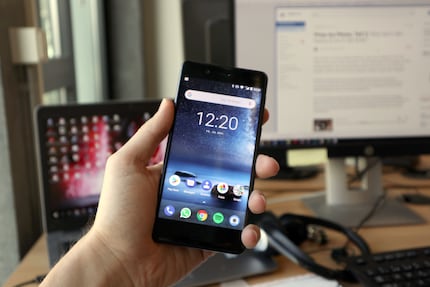
Is the Power Nokia as fast and furious as Vin Diesel?
What you don't read anywhere, but feel immediately: The surface of the Diesel model is less slippery. Much - less - slippery. I emphasise this quite deliberately. During the first Nokia 8 test, the phone slipped out of my hand when I tried to pull it out of my trouser pocket. Unfortunately, the camera lens on the back didn't survive the impact. I want to be honest: I really like the new, more non-slip surface of the Diesel Nokia, even if fingerprints appear more quickly and are more visible.
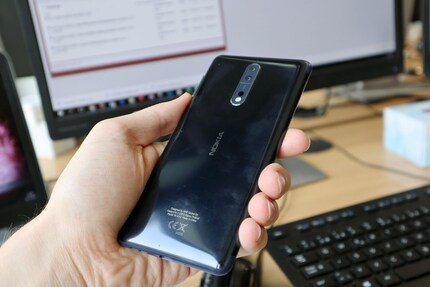
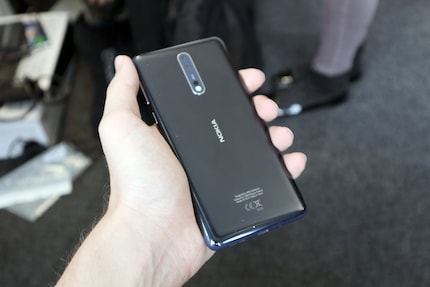
The Nokia 8 Diesel model tested in everyday use
What exactly does the extra computing power do for me in theory? I'll make a small digression.
More RAM and storage space in everyday life - why?
The most important component of a smartphone is the processor. To put it bluntly, it is the heart of the device - or the engine, if you like. Nothing works without it. Dominik's exciting and informative article on this can be found here. Just as important as the processor is the main memory - also known as RAM. It is the short-term memory of your smartphone, as it stores all the data required by running programmes or services. For example, the operating system or all apps that are running in the background and should be available immediately if you close them once and open them again later. Background processes and images are also stored in RAM.
So if we stick with the simplified metaphor: The more your mobile can memorise, the faster it can recite an essay to you without having to constantly pause to squint at the page - which would take time.
Test round - the first one!
Now I'm curious. Firstly, I'm taking a very pragmatic approach. This means that I try to simulate my mobile phone habits. I take both smartphones - the conventional Nokia 8 and the diesel Nokia 8 - and place them next to each other. I then try to open the same apps on both displays at exactly the same time. There are hardly any or no noticeable differences in speed. Both phones open the apps equally quickly and equally smoothly. Even after the twentieth app that I open and leave running in the background, I still don't notice anything. Even when I open YouTube and stream a video, I don't notice that one mobile is slower than the other. Or that the animations would falter. In short: both Nokias run as smoothly as ever. "So... is that a good thing?" I ask myself, without getting an answer.
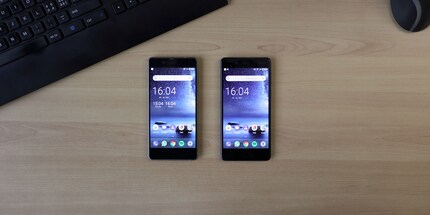
I doubt the methology. So I tell product manager Dario Pellanda about my initial impression and my "pragmatic" methodology. For him, the case is clear: "Try a stopwatch," he explains to me, "set a fixed sequence of several apps that need to load properly when they open. Then time each mobile. At the end, you look at the time difference". Right. With the feedback in my piggyback, I go back to my Nokias and try it out.
Test round - the second!
By the way - both phones are freshly set up and have exactly the same apps. Both run Android 8 Oreo. Before testing, I deleted all apps running in the background and charged both smartphones to 100%. Of course, I restarted both devices. Adaptive brightness is switched off and set to maximum on both. Airplane mode is on and I'm on the same Wi-Fi network with both. As you can see, I try to create the most equal conditions possible before I start the comparison. It's almost impossible to get it one hundred per cent right. But it's enough for the test.
The apps I'm trying out are as follows:
- Plague Inc
- Asphalt 8
- N.O.V.A. Legacy
- Fruit Ninja
- Zurich Airport
- Spotify
- YouTube
- Pokémon Go
- Camera app
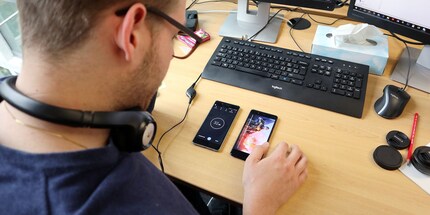
I don't just open the apps once, but start again from the last app. I want to fill the working memory - or short-term memory - properly and push it to its limits. I do three rounds in total. Again, I don't notice any differences. What the stopwatch then tells me surprises me.
I needed 3 minutes and 32 seconds for the entire procedure with the Nokia 8. With the diesel Nokia, it was only 3 minutes and 19 seconds! So I was a good 13 seconds - or six per cent - faster. For the sake of simplicity, I haven't taken measurement inaccuracies into account.
This may not sound like much, but Dario assures me that six per cent is a high figure for such a short test. "A normal user won't notice the difference in everyday use," he explains, "but power users will definitely notice whether an app opens within a second or just a second and a half. They want to click on the icon and - bang - the app should open immediately. No matter how many other processes are still running in the background."
That makes perfect sense to me. What did I expect? The Nokia 8 already ran very smoothly with 4 GB of RAM. I may hardly notice whether an app opens two or three tenths faster in everyday use. Power users who only close the programmes running in the background once a day - and who use resource-guzzling apps by the metre - will notice the computing power.
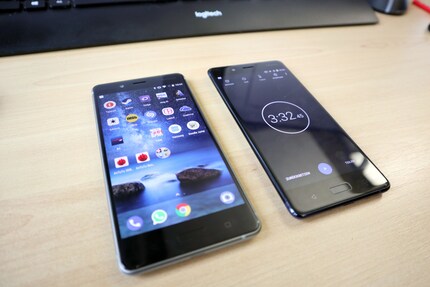
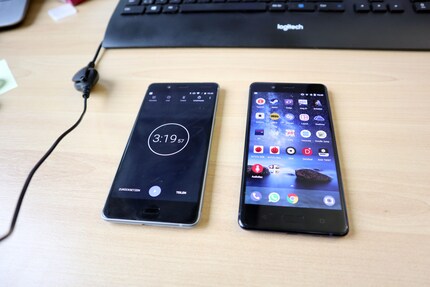
Conclusion - who is the Nokia 8 Diesel phone for?
In short: everyday users like me won't notice much difference to the conventional Nokia 8. That would probably have been expected. Nevertheless, I was hoping that the difference would have been a little more noticeable. That either speaks in favour of the Nokia 8 or against the Nokia 8 diesel model.
Nevertheless, I wouldn't be so quick to dismiss the extra charge as a waste. Two arguments in favour of the power model:
Today is not tomorrow
Apple provided us with the prime example with iOS 11: a new update arrives, is backwards compatible until the Stone Age, but kills the performance of older smartphones. That won't happen so quickly with the Diesel Nokia. The additional RAM will also ensure a smooth operating system in the future.
You are a power user
The mobile is equipped with stock Android. In other words, you won't find any superfluous fuss such as pre-installed apps or manufacturer-specific customisations to the user interface. This makes it easier to tinker with the system and customise it as you see fit. What's more, power users are already using the phone to its full potential and will be grateful for the extra power.
Are you planning to keep your smartphone for more than one or two years? Then the Diesel mobile is right for you. Are you a power user and like tinkering with the operating system? Then you'll enjoy it too. For other (everyday) users like me, we recommend sticking with the conventional Nokia 8.
The Nokia 8 Diesel model

I write about technology as if it were cinema, and about films as if they were real life. Between bits and blockbusters, I’m after stories that move people, not just generate clicks. And yes – sometimes I listen to film scores louder than I probably should.